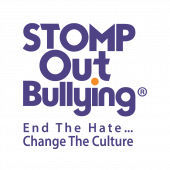Preventable Death: A Common Thread to Suicide
Written by Audrey PassMy father was a devoted physician and dedicated healer. He once told me that most premature deaths are preventable. This seemed an odd point of view for a Hematologist-Oncologist who treated terminal diseases.
I thought of his comments after recent, yet familiar, headlines surfaced describing children dying, the result of suffering the devastating impact of bullying.
According to reports, a ten-year old autistic child in Utah took her own life after being bullied and belittled in school. In a heartbreaking statement her family explained, “She was an easy target especially after a teacher joined in mocking this young lady.”
A teacher joined in mocking her?
At a high school in New Jersey, a young football player was accosted in the locker room when six older players attempted to pin him down while one of them held up a broomstick, allegedly threatening to sexually assault the boy with it.
Teammates assaulting one another?
At another New Jersey high school, several teenagers were sexually assaulted with a broomstick. As a result, the football program was halted. The response from the community—parents and students alike—was anger not at the perpetrators but rather at the administration for canceling games, and even more egregious, the victims themselves!
I can only imagine my father’s disgust at a community that defends the barbaric tradition of hazing over the health and well-being of a human being.
The common thread to many teenage suicides is bullying. Children — and sometimes adults — tormenting other children so severely they see no end to their abuse other than suicide.
These deaths are surely preventable.
Parents: Listen to your children.
Hear them when they share stories of bullying or being ostracized. Do not minimize the potential harm, even if your child downplays it, and keep the lines of communications wide open.
Victims of bullying often have no peers to turn to—do not become yet another deaf ear.
Educators: Bullying is not new—although cyberbullying and technology have amplified it.
But that doesn’t mean we should accept it as normal. Stand up for those who need help. Empower other students to be “upstanders.” Reward that behavior! Model what being an upstander looks like. Your words and actions have an impact.
Enforce your state’s anti-bullying legislation in your school.
Coaches: Do not turn a blind eye!
Hazing and other acts of violence against children does not strengthen them. It destroys them. And it is a criminal offense.
Alumni, Mentors and Upperclassmen: Be a true role model!
Your approval or disapproval has power—use it for good. Cut the cycle of abuse and don’t assume because you endured something painful others must face the same fate.
To the children being bullied: Don’t hide your pain.
Confide in someone. Open up to your parents and caregivers. Do not feel ashamed—you have done nothing wrong and deserve to live your life free of harm. There are resources and tools available to help you through the difficult times. You are not alone.
Bullies do not act for their own gratification; they act for the misguided approval of others. There are far more potential upstanders than bullies. Children are understandably reluctant to stand up to a bully, for fear the attention will turn on them. Know that there is strength in numbers—and I’ve yet to see a bully go up against a group of united upstanders. With no audience, the show is over.
So, this is a call to all the enablers:
- Be upstanders
- If you see something, say something
- Stand up against bullying
You just may just be saving an innocent life.
Bullying a child to the point of suicide? 100% preventable. Do your part.
share:


Follow STOMP Out Bullying